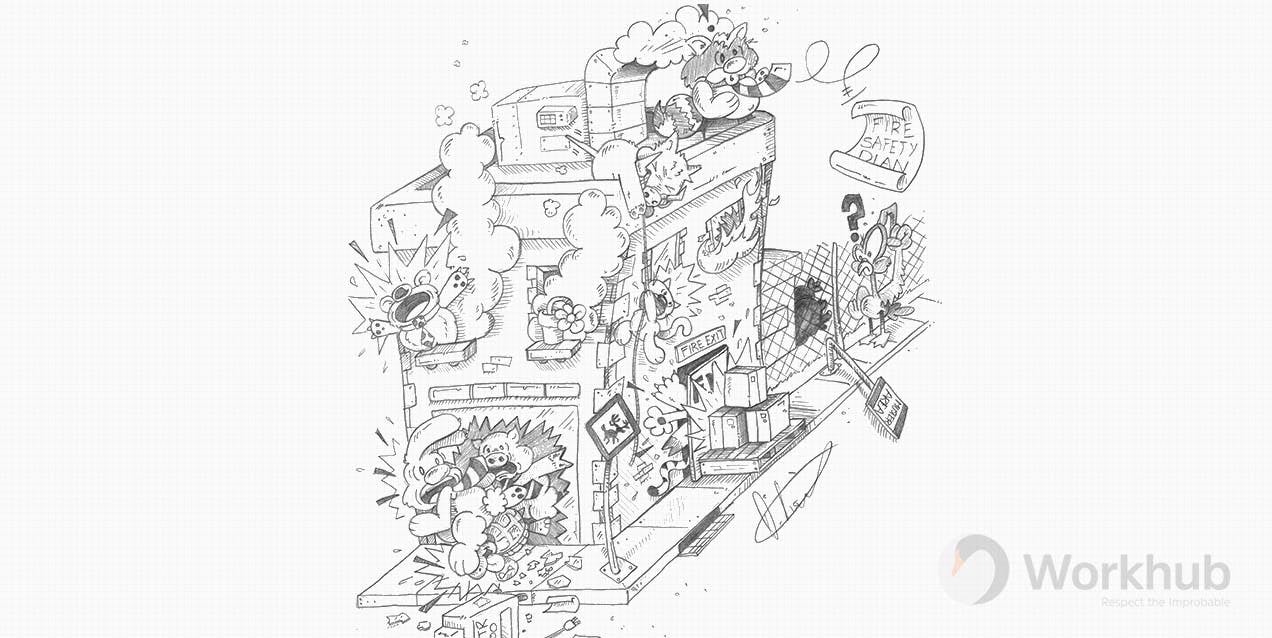
Fires can happen anywhere, including in the workplace, so it is essential to always be prepared. Know your responsibilities and what you can do to prevent fires and keep your employees and company safe in the event that a fire does occur. An updated and approved fire safety plan is a great way to start.
What is a fire safety plan?
According to the Canadian Centre for Occupational Health and Safety, “[a] fire safety plan is a detailed document that covers all aspects of fire safety for a specific building or property. The Plan will outline:
- A safe and orderly way for occupants to evacuate the building.
- Proper maintenance and housekeeping required to prevent fires.
- Methods of control that minimize the damage from fires when they do occur.”
Local governments and municipalities generally have their own fire code or requirements for specific buildings and occupancy rates. Make sure to check with local guidelines for specific regulations.
Be prepared
Ensure that your workplace has an updated and approved fire safety plan and a working fire alarm system. Keep in mind that your building may not have an alarm system or elaborate plan, and your procedures may be different from the ones below. If you work in a tall building, fire safety procedures may also differ.
Workers should know:
- The emergency procedures, including the fire plan
- The nearest fire exits to their work areas and the locations of the nearest fire alarms, including how to pull them in case they should need to be triggered
- Phone numbers of local fire services
Management’s responsibilities
- Ensure frequent inspections are conducted on fire safety equipment to ensure that everything is in working order. This equipment can include fire alarm systems, smoke detectors and fire extinguishers.
- Enlist the help of a Fire Safety inspector
- Create an evacuation plan. Make sure that the fire safety plan is posted in a visible area on each floor of the building.
- Make sure there is signage that clearly indicates any smoking areas
- Practice fire drills regularly with staff to ensure they are familiar with the fire safety plan, so that they will be prepared in case of emergency.
Kitchen or cooking areas
Ensure proper storage and use of appliances. Unplug appliances after use. Appliances that generate heat should be kept away from any flammable items or materials. This could include ovens, electric kettles, toasters, and space heaters. Inspect appliances and cords for faulty wiring and replace it immediately if necessary.
Keep a fire extinguisher in a convenient spot in the kitchen area. All workers should know where to find it and be taught how to use it.
Dress appropriately. Wear appropriate clothing for the type of work that is being done. Avoid flammable materials or loose-fitting clothing that could catch on fire.
Be alert. Pay attention and do not leave the cooking area for extended periods of time. Set timers when cooking to remind you to check on food.
Preventing fires in office spaces
Ensure clear pathways. Be sure that there are clear and easy pathways with no obstructions to doorways or exit points.
Designate a meeting place or muster point. This area should be at a safe distance from the building outside. Ensure the area is clear of traffic.
Inspect electronics. Electronics, such as computers, scanners and printers should be inspected regularly. If there is faulty wiring, replace it immediately.
A fire safety plan can help to protect employees and your business. Ensure that equipment is up to date and that employees take part in fire drills regularly. Fire safety training for all employees is crucial. Taking these steps can help you to be prepared in case a fire does occur and drastically reduce the risk of fire to begin with.
Workhub provides a complete health and safety compliance software that allows easy management of training, procedures, policies, inspections, and more, centralized in one easy-to-use hub.
Still have questions?
Let our knowledgeable sales team give you a full product tour and answer any specific questions you may have.
Workhub Internal